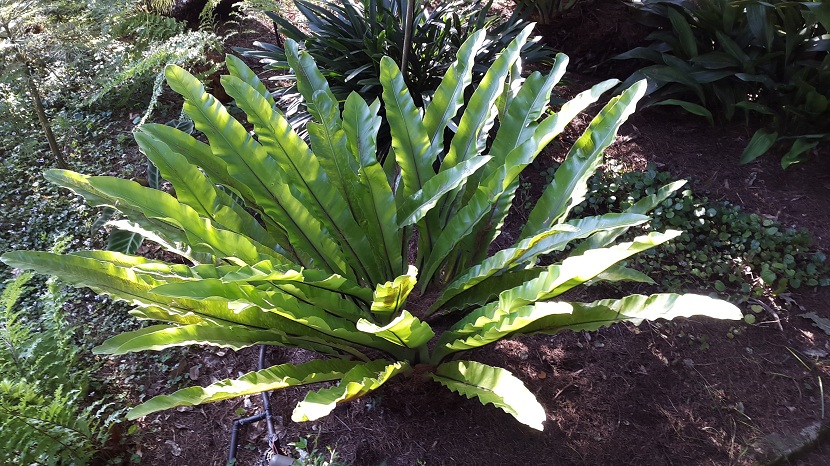
Today we are going to talk about a successful interior that offers smooth sheets and is marked with beautiful undulations that can give us a good decoration of our home. Its about Asplenium nidus. Its common name is that of the bird's nest and is due to the fact that the leaves that they have that are gathered in such a way that it seems that they are surrounding together quite cozy. It is a fairly easy species to grow and belongs to the cosmopolitan group of plants that includes about 700 species of ferns that have good resistance capabilities.
In this article we are going to tell you everything you need to know about the characteristics and care of the Asplenium nidus.
Key features
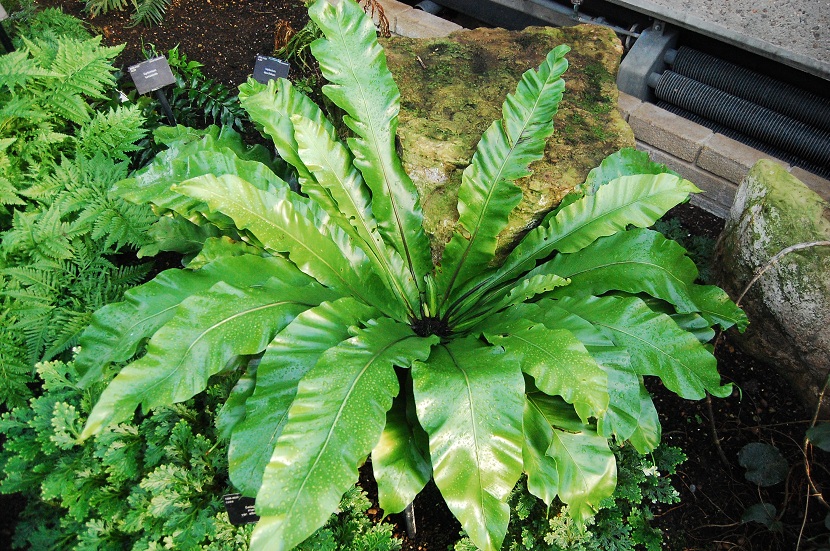
We are talking about a type of indoor fern that grows on firm ground and is quite resistant. Its natural habitat is the tropical forests of both Asia, Africa and the Pacific. It is usually only grown indoors as it is sensitive to frost. It belongs to the Aspleniaceae family. As its name indicates, It is a fern in which the leaves form rosettes to collect rainwater. This characteristic is a kind of evolution and adaptation in its natural habitat since it is found in high places, such as in trees.
It has simple and upright slings that take a pointed tongue shape that usually has dimensions of between 50 and 120 centimeters long. The edges are very bright but smooth green and marked by a black midrib. The center of the rosette that forms its leaves are usually where the most leafy leaves are born. These rosettes take on a kind of dark, hairy nest shape.
There are other species that belong to the genus Asplenium and that are also intended for indoor cultivation. The reverse of the leaves that are ripened appear in dark oblique parallel lines next to the middle rib. On the back of these leaves there are some sores in which the spores are contained that, later, will be used to reproduce the fern sexually.
El Asplenium nidus it is able to live for several years indoors without any problem. You simply have to take into account some aspects in the requirements of your care. We will analyze the aspects one by one and give the best advice for proper care.
Caring for the Asplenium nidus
Location
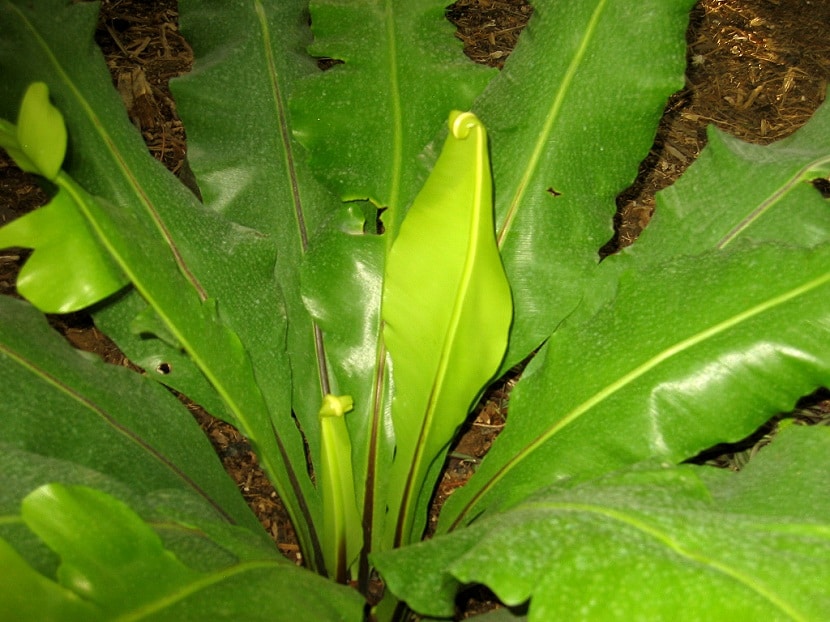
This plant is used indoors as long as the rooms have good lighting. The fact that they are well lit does not correspond to the fact that the sun is shining directly. Also you need a room where the ambient humidity is quite high and is protected from drafts. One of the main problems that occur in areas with a colder climate is that indoor plants often cause problems when using heating. When we try to increase the temperature of the interior in an artificial way we are eliminating the environmental humidity in a natural way and altering the range of temperatures that the plant can withstand.
For this reason, it is vitally important that the room can have high lighting and ambient humidity but that it is continuously protected from air currents to maintain this constant degree of humidity. This fern needs an exposure to the shade as direct sun can instantly burn its leaves. The ambient temperature should remain in a range between 15 and 25 degrees Celsius. You can exceed these temperatures occasionally and for a short time. If we are frequently in a temperature range far from this, the plant can suffer enough that it can neither grow nor survive.
Soil and irrigation
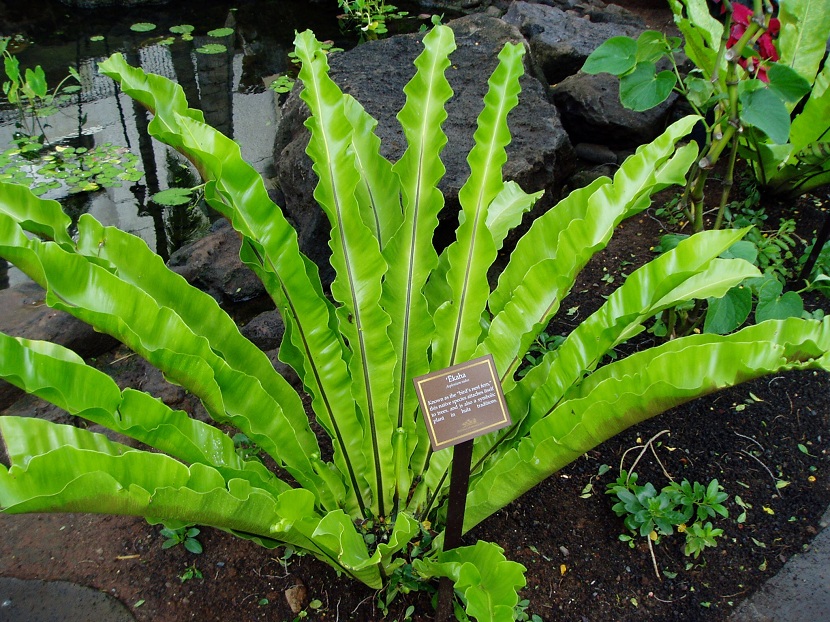
As for the soil, the ideal for this type of plant is that it be made up of equal parts of heather soil, sand and peat. This mixture is made in equal parts and, if there is a lack of humidity, we will add a little more amount of peat. The peat It is the essential substrate to be able to maintain the environmental humidity in the roots and reduce the frequency of irrigation since it always remains humid.
When we have already planted the Asplenium nidus and the spring time arrives is the best time to transplant it. If we see the pot where we have planted it, it is already small, it will need a larger one. The spring time is the most recommended for transplantation since the temperatures are more optimal and we can avoid possible frosts.
If we make the mixture of heather, peat and sand we will not need the irrigation will be very abundant. Irrigation has to be just enough so that the soil always maintains a high degree of humidity but without flooding it. Let's not forget that if the soil does not have good drainage, the plant could end up drowning. This is when irrigation water is stored. If it is very hot during the summer, it is convenient to spray the leaves with lime-free water. This is only done if you see that the plant begins to look a little less lively and the temperatures frequently exceed the range that we mentioned above. Said spraying would be carried out between irrigation and irrigation.
Pests and reproduction of Asplenium nidus
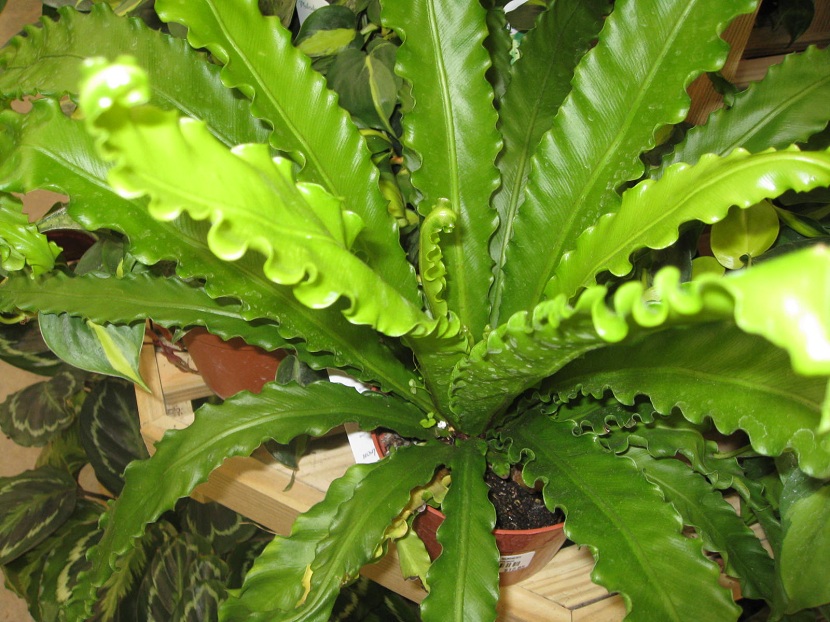
Although it is a houseplant it is convenient to pay it during the summer with a foliar fertilizer. This fertilizer will help it to have all the nutrients to be able to spend the time when it is hotter. Remember that it is important that the plant is kept in a temperature range of between 15 and 25 degrees.
Although we have a good protection regime from the different air currents and place it in the shade inside our home, they are prone to attacks by mealybugs and mushrooms. To alleviate this situation, it is convenient to remove the surface soil every 15 days. In this way, we will achieve good aeration in the roots and avoid fungal diseases.
Regarding its multiplication, the Asplenium nidus it is quite difficult to reproduce if you are a hobbyist of gardening. It is a reproduction by spores. It is more advisable to buy the plant in a nursery.
I hope that with this information you can learn more about the Asplenium nidus.
the correct family: Aspleniaceae, just for you to correct nn
Hello Moncada.
It is already corrected. Thank you very much for the warning.
regards
Hello,
I recently bought a fern of these and I am not sure if it is normal, but I noticed some spots or white discolorations on the new leaves, I checked them and it is not oidium, so I do not know if it is a lack of any nutrient or has some type of pathology it is affecting her.
I would be very grateful if you can guide me in this regard.
Hello Sandra.
The spots or discolorations are almost always due to fungi, but it may also be that at some point you hit the sun directly and you had burned.
For now, I only recommend that you keep an eye on it. If you see that these spots increase in size, cut the affected parts and treat the plant with a multipurpose fungicide.
Regards!